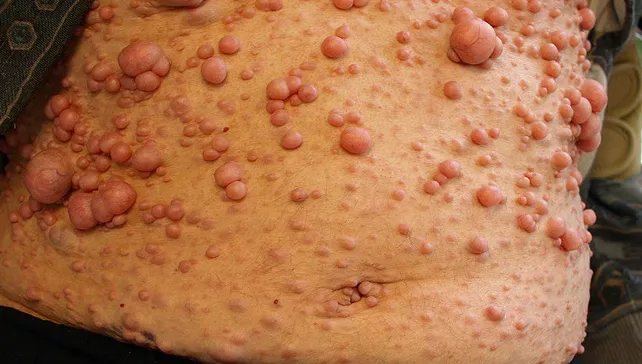UNVEILING THE MYSTERY OF CAFÉ-AU-LAIT MACULES AND NEUROFIBROMATOSIS TYPE 1.
Have you ever noticed light to dark brown patches on your skin or someone else’s?
These are known as Café-au-lait macules (CALMs), and while they might seem like simple skin blemishes, there’s much more to these spots than meets the eye.
WHAT ARE CAFÉ-AU-LAIT MACULES (CALMS)?
Café-au-lait macules are common pigmented lesions that can appear on anyone
- They are well-circumscribed, meaning they have a clear boundary, and their colour can range from light to dark brown.
These patches vary significantly in size, from a few millimetres to over 20 centimetres in diameter, and they may be present at birth or develop early in life.
THE CONNECTION BETWEEN CALMS AND SYSTEMIC DISEASES.
While many people may have one or two CALMs, a higher number or specific patterns of these spots can signal something more serious.
One of the most notable conditions associated with multiple CALMs is:
1. Neurofibromatosis Type 1 (NF1)

NF1 is a genetic disorder caused by a mutation in the NF1gene on chromosome 17.
• About half of those with NF1 have inherited this mutation
• But NF1 isn’t the only condition linked to CALMs.
2. McCune-Albright Syndrome (MAS)

This syndrome results from a mutation of the Gs protein, which activates adenylate cyclase.
3. Legius Syndrome

An autosomal dominant disorder due to a mutation in the PTPN11 gene on chromosome 12, leading to distinct skin manifestations.
4. Noonan Syndrome with Multiple Lentigines (NSML)

An autosomal dominant disorder due to a mutation in the PTPN11 gene on chromosome 12, leading to distinct skin manifestations.
TREATMENT AND MANAGEMENT.
For the most part, CALMs are benign, meaning they don’t cause harm.
However, for those who are concerned about their appearance, laser therapy is an option.
This treatment is primarily cosmetic and has shown low recurrence rates for those who respond well to the initial therapy
A WORD OF CAUTION.
If you or a family member have multiple CALMs, it may be worth consulting with a medical professional.
Multiple CALMs can be a sign of an underlying genetic syndrome.
An interprofessional team can provide a thorough evaluation and offer guidance on what steps to take next.
LOOKING AHEAD.
Without treatment, Café aulait macules generally persist throughout life.
However, understanding the potential associations with genetic syndromes is crucial for early detection and management.
So, while those brown spots might seem like just a part of your skin, they could be telling you a lot more about your health.
Conclusion:
Café-au-lait macules are more than just skin deep.
Their presence can be an important clue in diagnosing genetic conditions, such as Neurofibromatosis Type 1.
By being aware of these spots and understanding when they might indicate something more serious, you can take proactive steps towards maintaining your health and wellbeing.

Dr. H. K. Saboowala. M.B.(Bom) M.R.S.H.(London) has dedicated his expertise to shedding light on these often overlooked, yet significant skin lesions, reminding us that every part of our body has a story to tell.
This blog invites readers to look beyond the surface and explore the deeper implications of what might seem like a simple skin spot, blending medical insight with an engaging narrative to capture attention and encourage informed health decisions.
This blog also invites the readers dive deep into the topic and if interested, recommends purchasing the E-Book titled-

Dr.Hakim k.Saboowala Medicine & Science | English
A Brief Summary of “Café-au-lait Macules (CALM)” and “Neurofibromatosis Type 1”
About us
As a dedicated General Physician and
Dermatologist with over 45 years of practice
in Mumbai, I am deeply passionate about
advancing medical knowledge. Read More
Quick Links
Contact us
- 907/B Raj Paradise C H Scty. Ltd.
- +91 8850330027
- hakimsaboowala@gmail.com
